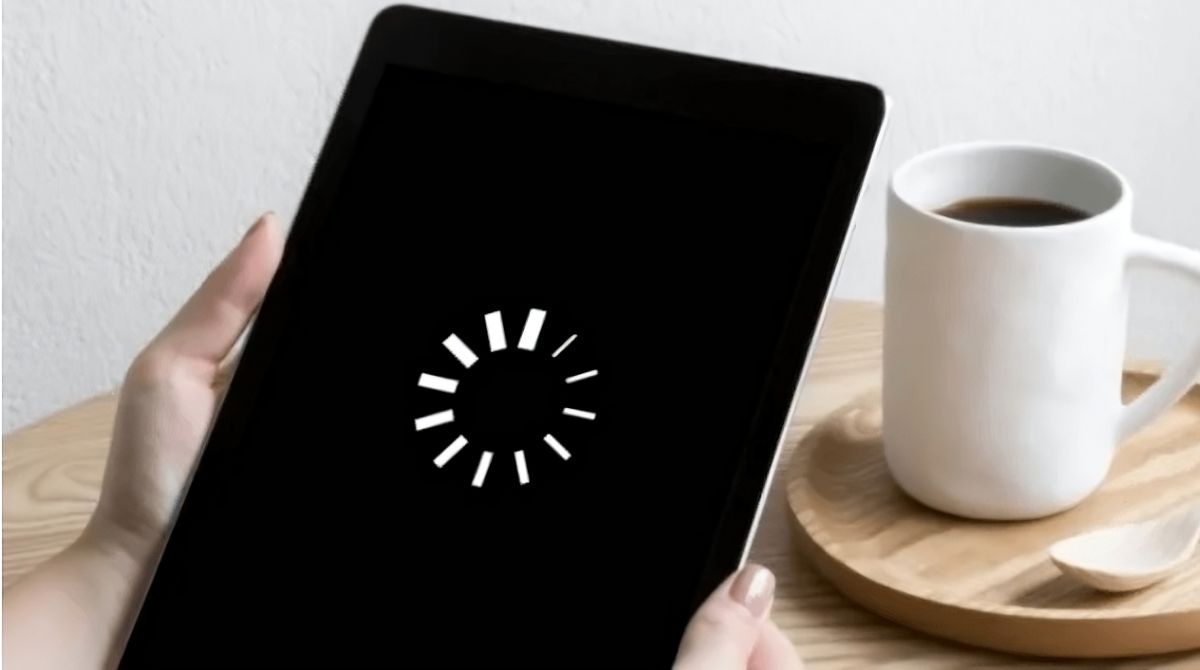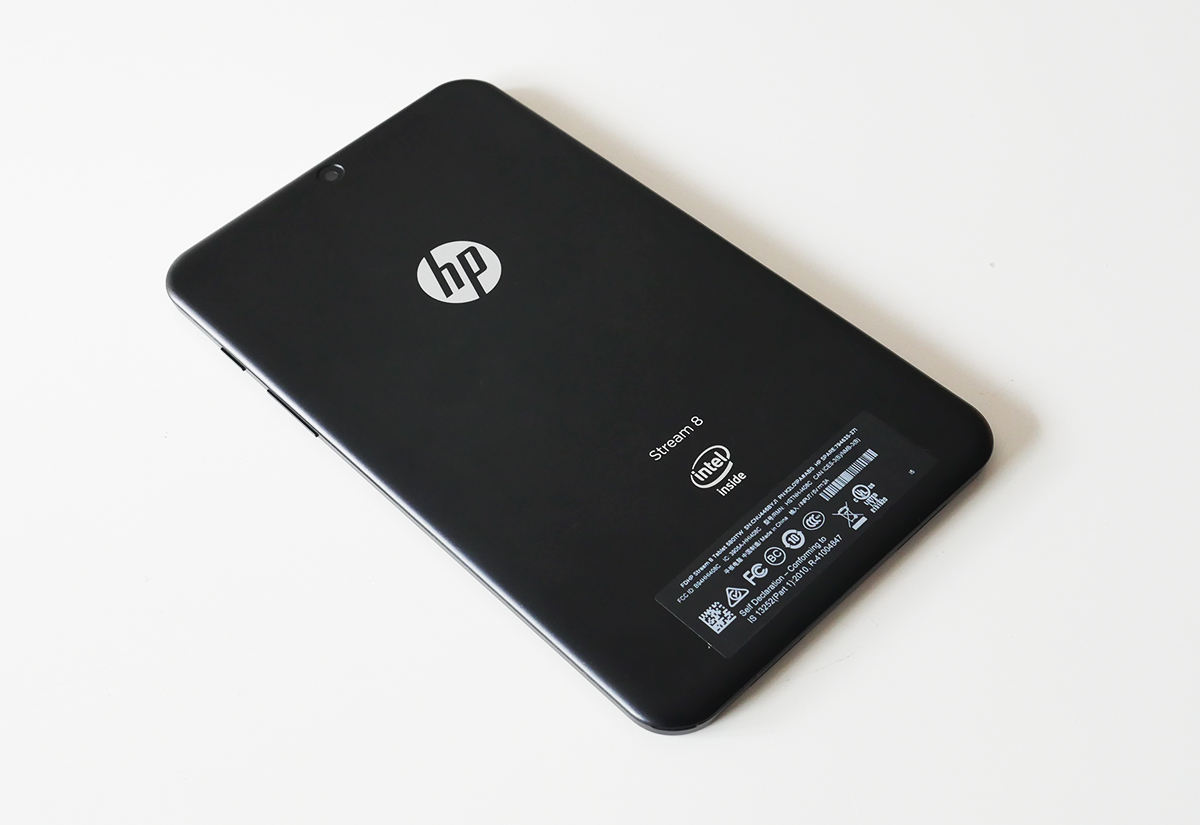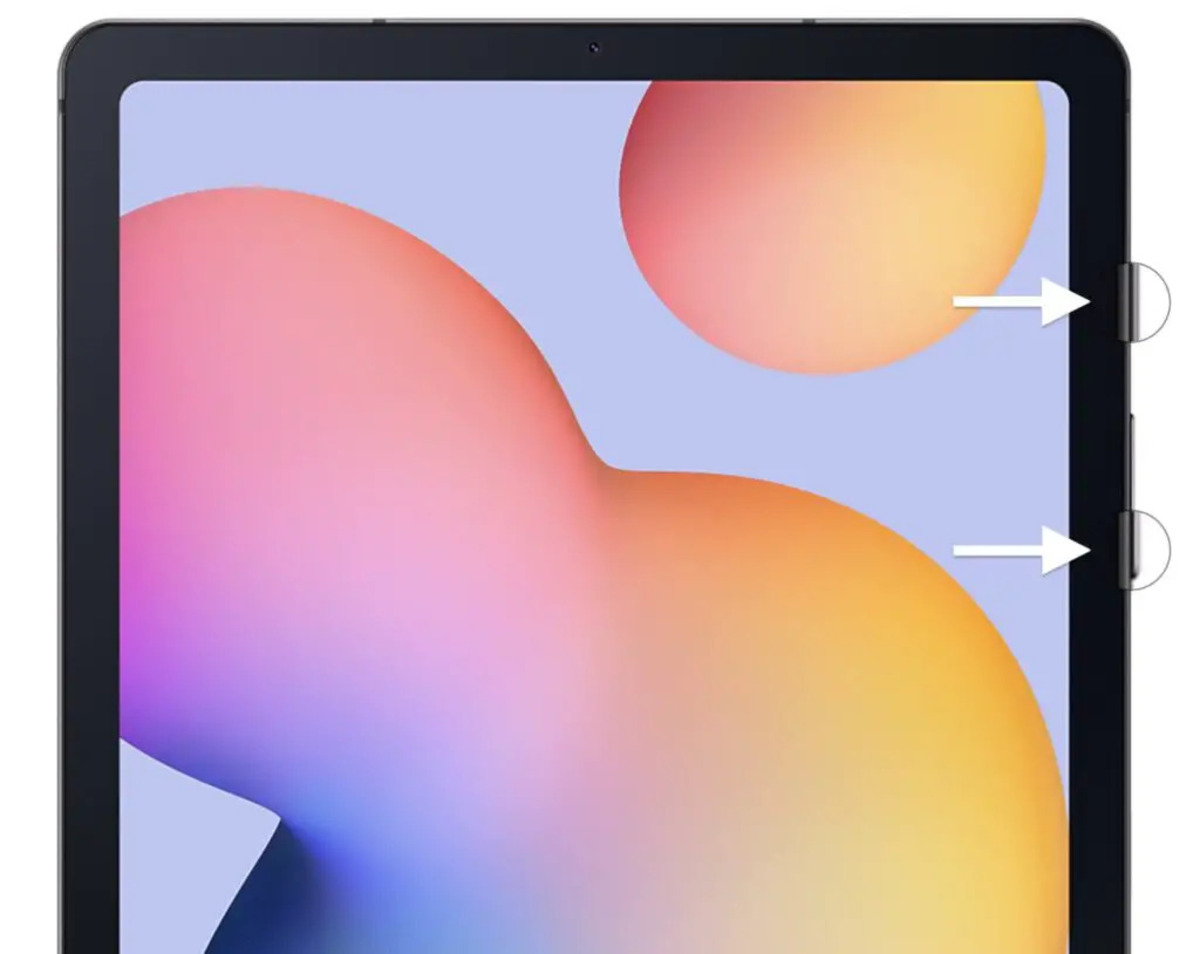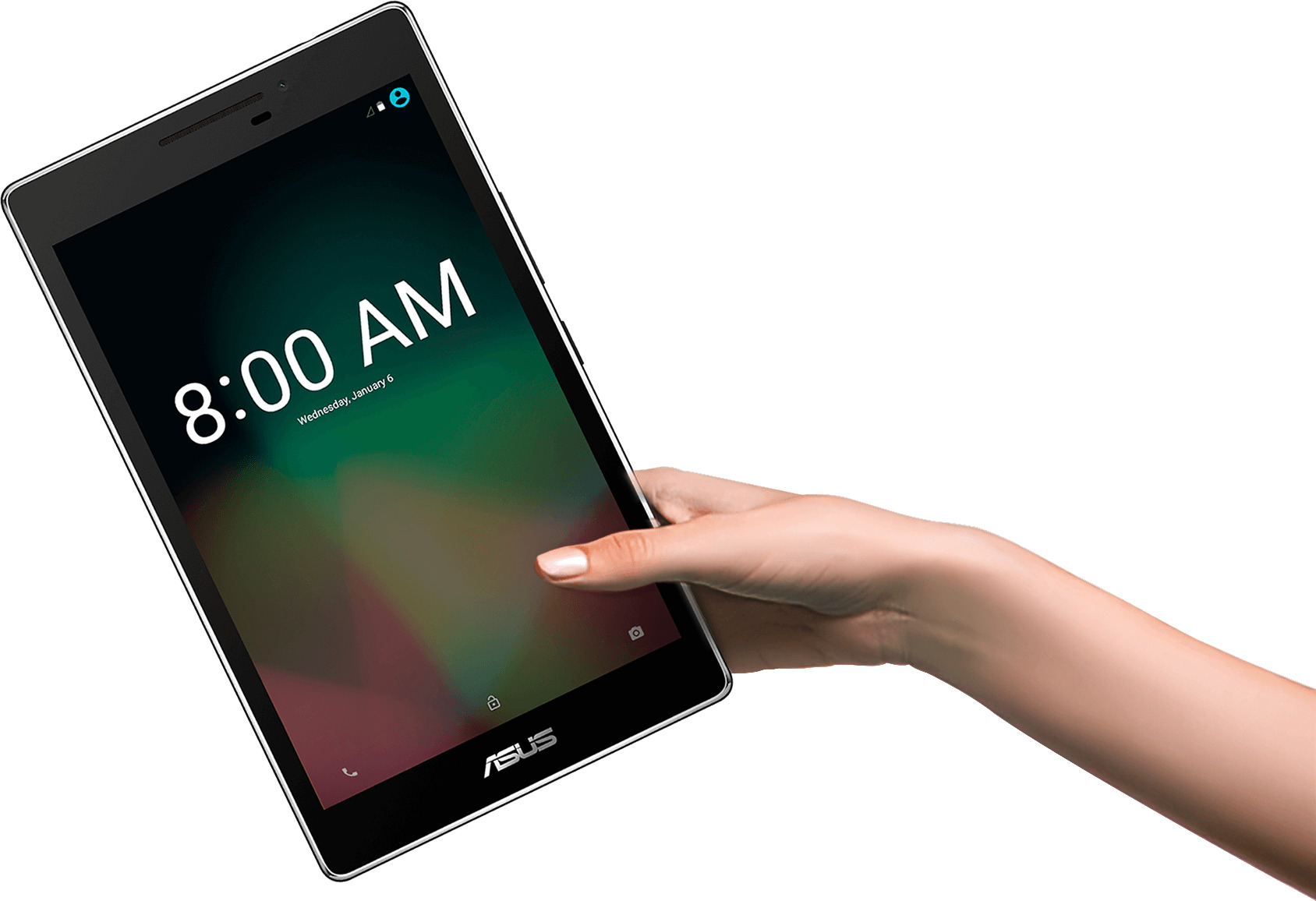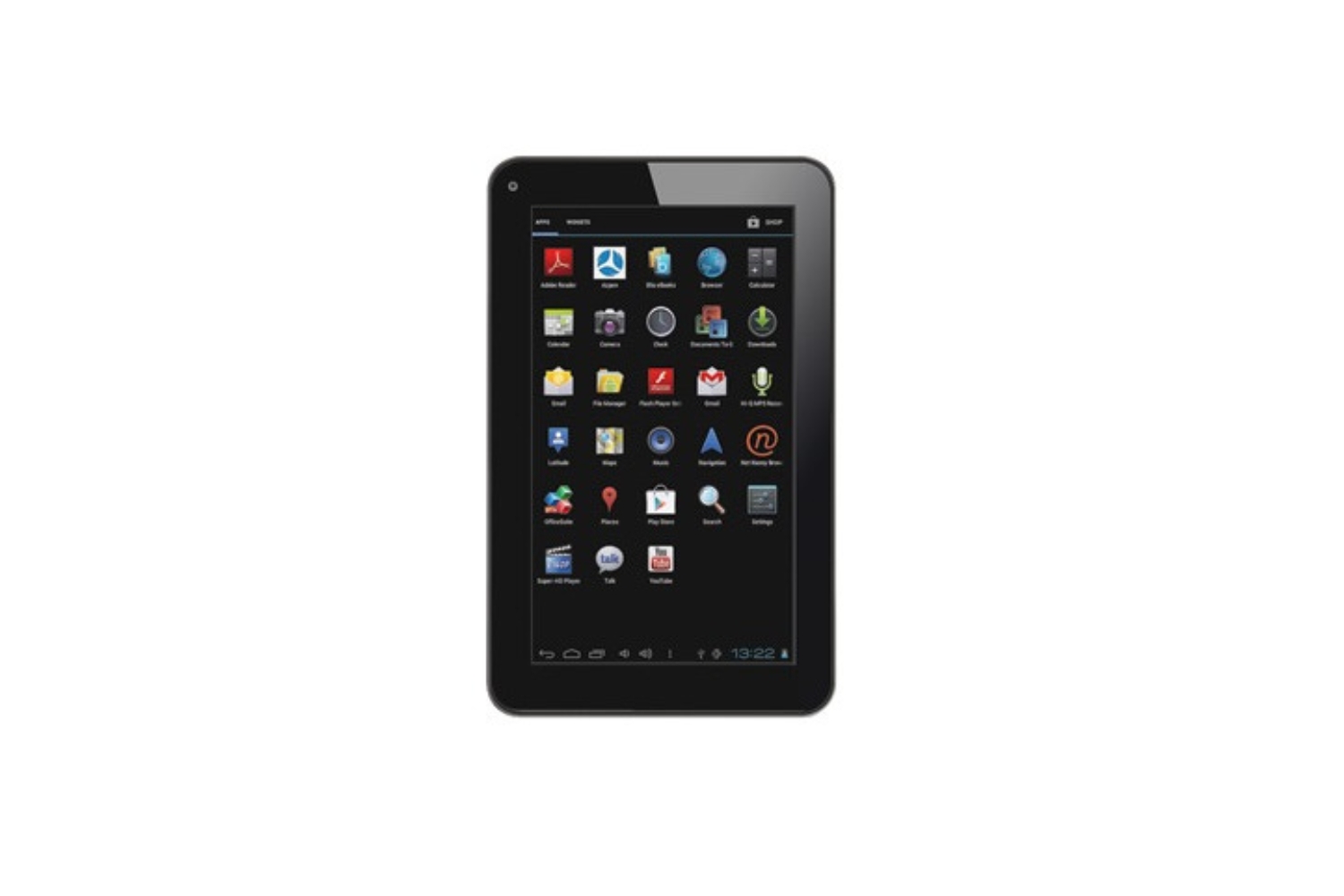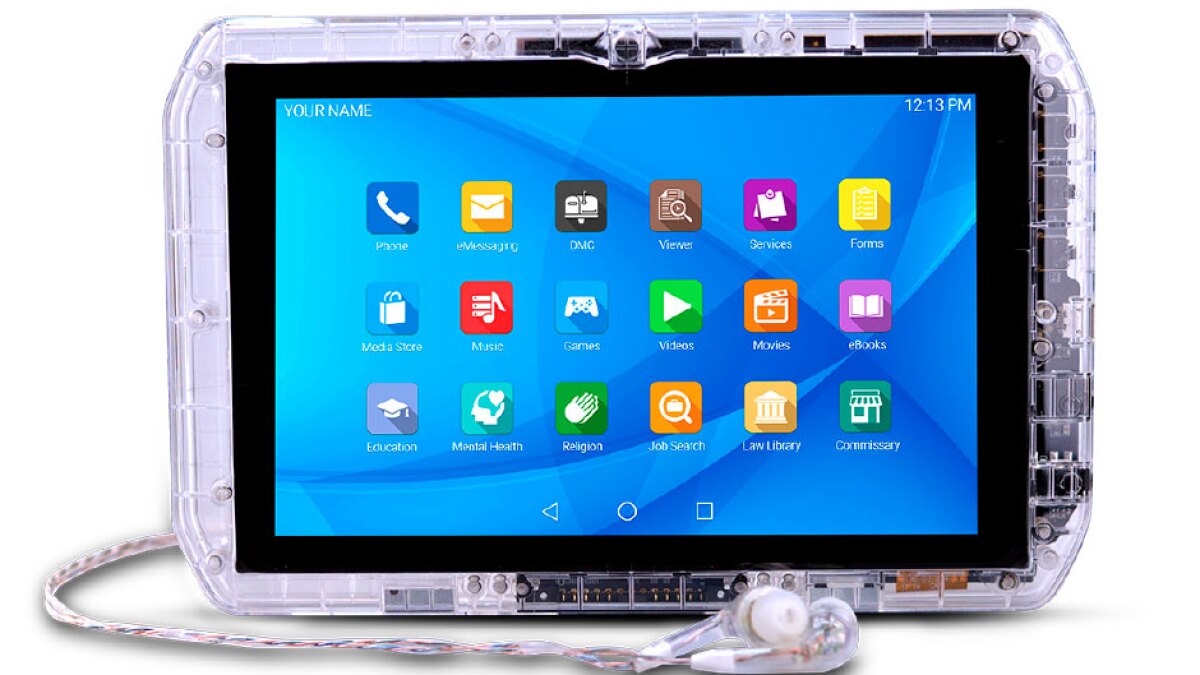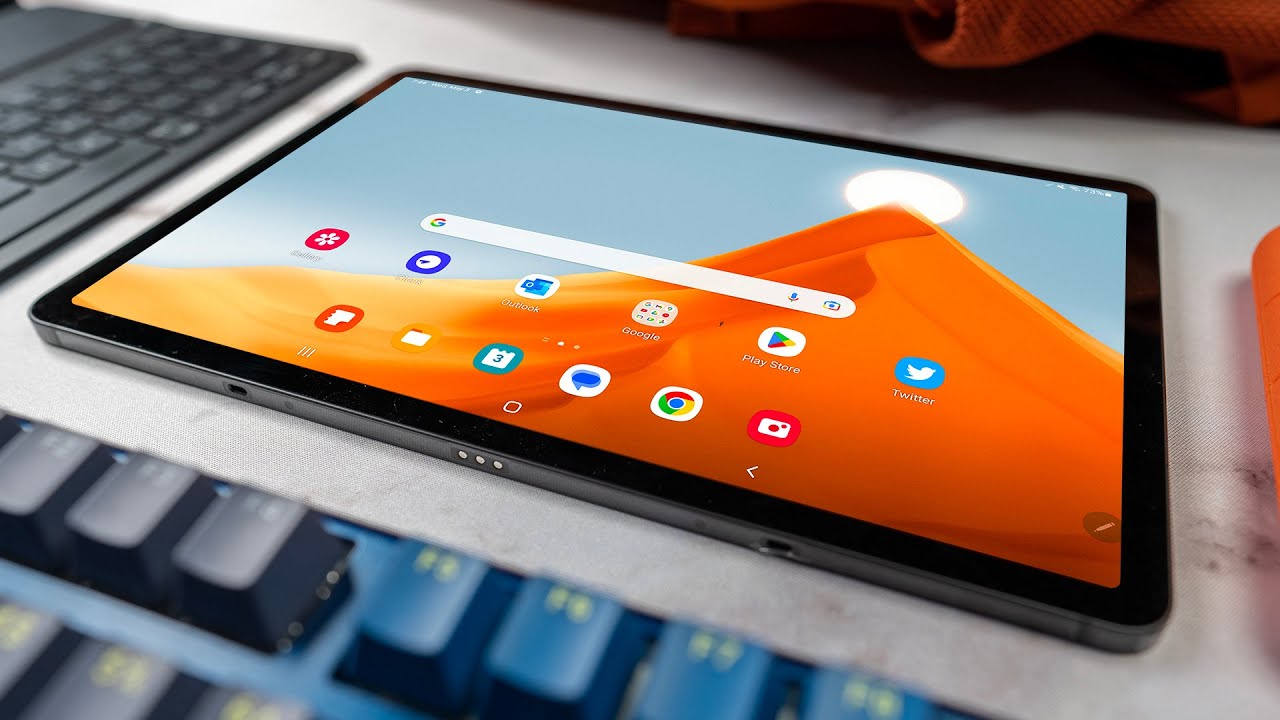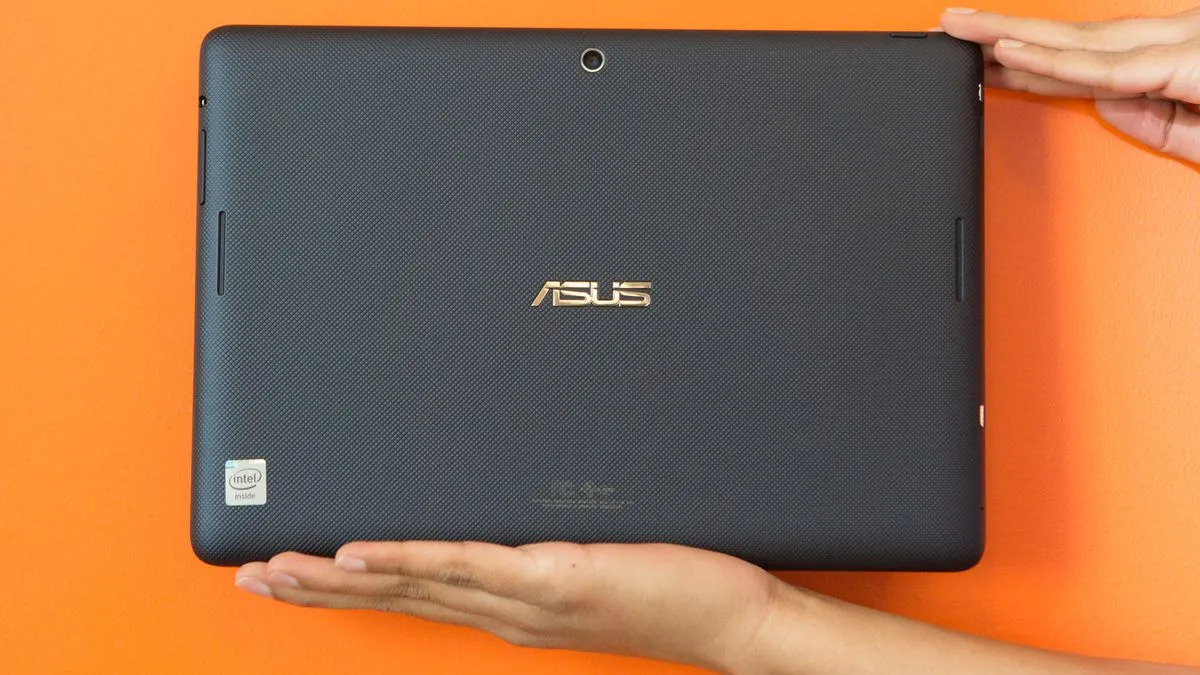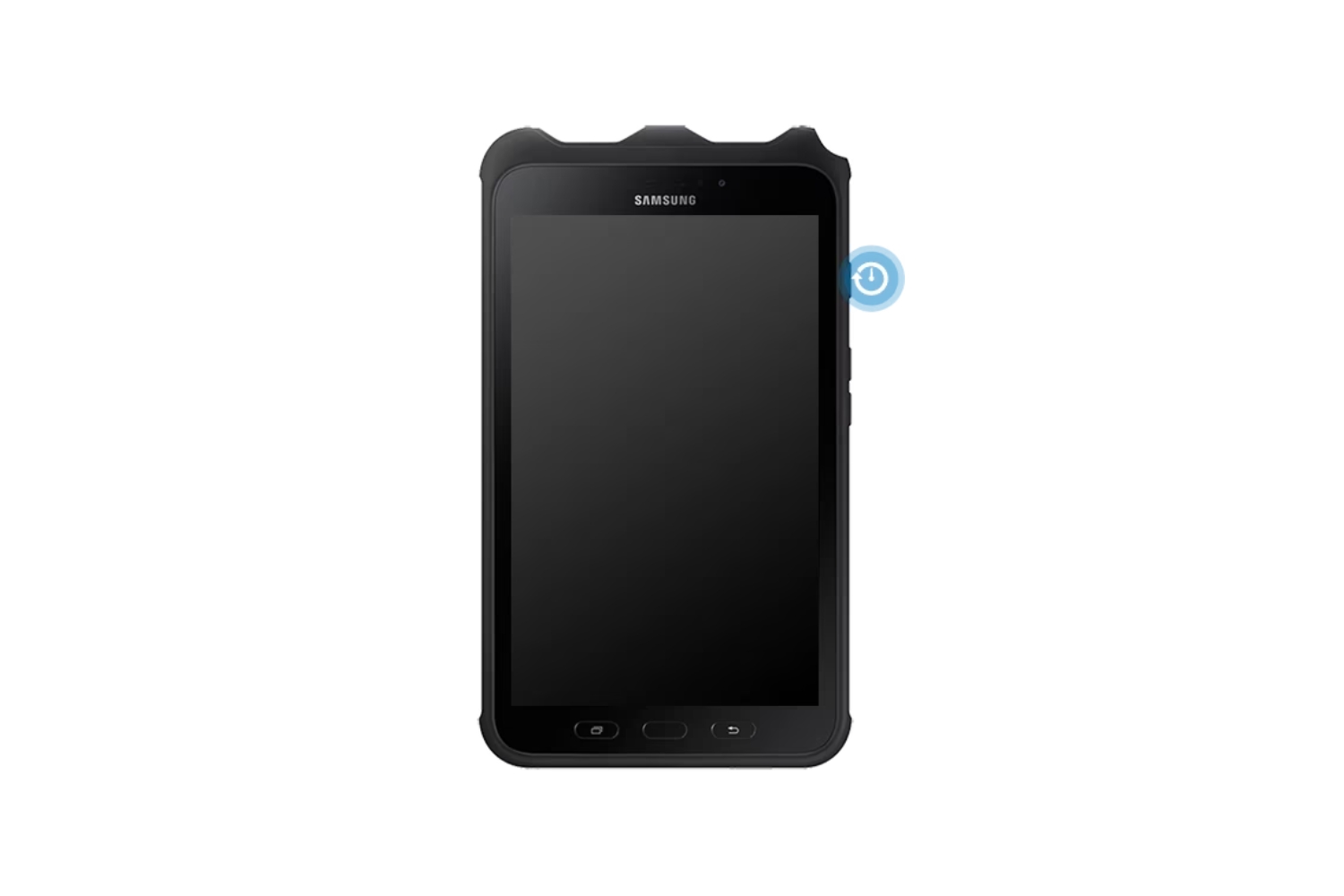Common Causes of Tablet Crashes
Tablets have become an essential part of our daily lives, but dealing with unexpected crashes can be frustrating. Understanding the common causes of tablet crashes can help you troubleshoot and prevent these issues from occurring. Here are some of the main culprits behind tablet crashes:
- Insufficient Memory: Tablets with limited RAM or storage can struggle to run multiple apps simultaneously, leading to crashes. Check your tablet’s storage capacity and consider deleting unused apps or files to free up space.
- Outdated Operating System: Using an outdated operating system can cause compatibility issues with certain apps or software, resulting in crashes. Make sure to regularly update your tablet’s operating system to stay up to date with the latest bug fixes and performance enhancements.
- Overloaded CPU: Running resource-intensive apps or having too many apps open in the background can overload your tablet’s CPU, causing it to crash. Try closing unnecessary apps or restarting your tablet to relieve the strain on the CPU.
- Unstable App or Third-Party Software: Some apps or third-party software may have bugs or compatibility issues that can lead to crashes. Update your apps regularly and uninstall any suspicious or unreliable software to reduce the risk of crashes.
- Network or Connectivity Issues: Poor Wi-Fi or mobile network connections can disrupt app functionality and cause crashes. Ensure that you have a stable and reliable network connection, or switch to airplane mode to isolate the issue.
- Overheating: Tablets can overheat when they are subjected to high temperatures or excessive usage. Overheating can affect the device’s performance and lead to crashes. Avoid using your tablet in direct sunlight or on soft surfaces that block heat dissipation, and give it breaks when performing demanding tasks.
- Malware or Viruses: Tablets are not immune to malware or viruses, which can cause system instability and crashes. Install reputable antivirus software and regularly scan your tablet for potential threats.
- Hardware Problems: In some cases, hardware issues such as faulty memory chips or a damaged battery can be the root cause of tablet crashes. If you suspect a hardware problem, contact the manufacturer or service provider for assistance.
By identifying and addressing these common causes, you can minimize the occurrence of tablet crashes and ensure a smoother user experience. In the next section, we will explore some effective troubleshooting steps to fix tablet crashes.
Insufficient Memory
Insufficient memory is a common cause of tablet crashes. When your tablet’s random access memory (RAM) or storage space is running low, it can struggle to handle the demands of running multiple apps or processes simultaneously, leading to crashes. Here are some steps you can take to address this issue:
- Check your tablet’s storage: Go to your tablet’s settings and look for the storage or memory section. This will give you an overview of how much storage space is available and what is using up the most space. Delete any unnecessary files, photos, or videos to free up storage.
- Clear app cache and data: Apps accumulate temporary files and data over time, taking up additional space. Go to your tablet’s settings, find the apps section, and select the apps that are using a significant amount of storage. Clear the cache and data for these apps to free up some memory.
- Manage your apps: Take a look at the apps installed on your tablet and evaluate if you really need all of them. Uninstall any apps that you don’t use regularly or that are taking up too much space. This will not only free up memory but also improve the overall performance of your tablet.
- Move apps to external storage: If your tablet supports it, you can move certain apps to external storage such as a microSD card. This can help free up internal storage space and reduce the strain on your tablet’s memory.
- Limit background processes: Some apps continue to run in the background even when you’re not actively using them, consuming memory and causing your tablet to slow down or crash. Go to your tablet’s settings and look for the developer options or battery optimization settings to limit background processes.
- Restart your tablet: Sometimes, a simple restart can help clear the memory and resolve any temporary issues causing crashes. Restart your tablet regularly to keep it running smoothly.
By taking these steps to address insufficient memory, you can prevent crashes and improve the overall performance of your tablet. However, if the problem persists or you notice other underlying issues, it is recommended to seek assistance from the manufacturer or a qualified technician. In the next section, we will explore another common cause of tablet crashes: outdated operating systems.
Outdated Operating System
Using an outdated operating system on your tablet can result in compatibility issues and lead to crashes. Operating system updates not only introduce new features but also fix bugs and enhance overall system stability. Here are some steps you can take to address issues related to an outdated operating system:
- Check for updates: Go to your tablet’s settings and look for the system update section. Check if there are any available updates for your operating system. If updates are available, download and install them to ensure you have the latest version.
- Automate updates: Set your tablet to automatically check for and install updates. This will ensure that you are always running the most up-to-date version of the operating system without manual intervention.
- Backup your data: Before installing any updates, it is advisable to backup your important data to prevent any potential data loss. Use a cloud storage service or connect your tablet to a computer and transfer the files you want to keep.
- Enable automatic app updates: In addition to updating the operating system, it’s important to keep your apps up to date as well. Enable automatic app updates in your tablet’s settings to ensure that you have the latest versions installed.
- Factory reset: If you are experiencing persistent issues and updating the operating system does not resolve the crashes, you can consider performing a factory reset. This will restore your tablet to its original state and can help resolve software-related issues.
- Consider professional help: If you are unsure about updating your operating system or encountering difficulties in the process, consider seeking assistance from the manufacturer’s support or contacting a qualified technician.
By keeping your tablet’s operating system up to date, you can ensure compatibility with the latest apps and software, as well as improve system stability. However, it’s important to note that occasional crashes might still occur due to other factors. In the next section, we will explore one of those factors: overloaded CPU.
Overloaded CPU
Running too many resource-intensive apps or processes simultaneously can overload your tablet’s central processing unit (CPU) and cause crashes. When your CPU is overwhelmed with tasks, it struggles to handle them efficiently, leading to performance issues and eventual crashes. Here are some steps you can take to address an overloaded CPU:
- Close unnecessary apps: Check which apps are running in the background and close any that you don’t currently need. This will free up CPU resources and reduce the strain on your tablet.
- Use task manager or app switcher: Most tablets have a built-in task manager or app switcher that allows you to view and switch between running apps. Use this feature to identify resource-intensive apps and close them if necessary.
- Restart your tablet: Sometimes, a simple restart can help clear temporary processes and free up CPU resources. Restart your tablet regularly, especially if you notice it becoming sluggish or experiencing crashes.
- Keep your tablet updated: Operating system updates often include performance enhancements and bug fixes that can optimize CPU usage. Make sure to keep your tablet’s operating system and apps up to date to take advantage of these improvements.
- Avoid excessive multitasking: While modern tablets are capable of handling multiple tasks, pushing them to their limits can lead to CPU overload. Try to limit the number of apps running simultaneously and focus on one task at a time.
- Monitor CPU usage: There are various apps available that allow you to monitor your tablet’s CPU usage. Install one of these apps to identify any apps or processes consuming an unusually high amount of CPU resources and take appropriate action.
- Consider a factory reset: If you have tried the above steps and your tablet’s CPU is still consistently overloaded, a factory reset may be necessary. This will remove all apps and data, giving your tablet a fresh start and potentially resolving any software-related issues.
By following these steps and managing your tablet’s CPU usage, you can reduce the chances of CPU overload and prevent crashes. However, it’s important to note that if your tablet’s hardware is outdated or not capable of handling the tasks you require, crashes may still occur. In the next section, we will explore another common cause of tablet crashes: unstable apps or third-party software.
Unstable App or Third-Party Software
Unstable apps or third-party software can be a major cause of tablet crashes. These apps may have bugs, compatibility issues, or conflicts with other software on your tablet, leading to crashes. Here are some steps you can take to address this issue:
- Update your apps: Developers regularly release updates to fix bugs and improve app stability. Check for updates in your app store and install the latest versions of any apps that are experiencing crashes.
- Uninstall unreliable apps: If you notice crashes occurring consistently with a specific app, consider uninstalling it. Some apps may be poorly developed or have compatibility issues with your tablet, so removing them can resolve the crashing problem.
- Check app reviews: Before installing new apps, read the reviews and ratings from other users. If an app has numerous negative reviews citing crashes or stability issues, it’s best to avoid installing it on your tablet.
- Use official app sources: Stick to reputable app sources such as the Google Play Store or Apple App Store. These platforms have robust security measures and rigorous app review processes, reducing the likelihood of installing unstable software.
- Avoid unofficial or pirated apps: Downloading apps from unofficial sources or using pirated versions not only poses security risks but can also introduce unstable software to your tablet, leading to crashes. Stick to official sources to ensure app stability and security.
- Perform a clean install: If you suspect that a particular app is causing crashes but updating or uninstalling it doesn’t resolve the issue, consider performing a clean install. Remove the app entirely from your tablet and reinstall it from scratch.
- Reset app preferences: In some cases, conflicts between apps can cause crashes. Navigate to your tablet’s settings, find the apps section, and look for the option to reset app preferences. This will reset app permissions and preferences, potentially resolving any conflicts.
By following these steps and being mindful of the apps and software you install on your tablet, you can reduce the chances of crashes caused by unstable apps or third-party software. However, if the crashes persist or you notice other underlying issues, it is recommended to seek assistance from the app developer or contact the manufacturer’s support. In the next section, we will explore network or connectivity issues as another possible cause of tablet crashes.
Network or Connectivity Issues
Network or connectivity issues can contribute to tablet crashes, especially when using internet-dependent apps or services. Unstable Wi-Fi or mobile network connections can disrupt app functionality and lead to crashes. Here are some steps you can take to address network or connectivity issues:
- Restart your router or modem: Sometimes, network issues can be resolved by simply restarting your router or modem. Power off the device, wait a few seconds, and then power it back on.
- Check your network signal: Check the strength of your Wi-Fi or mobile network signal. If the signal is weak, try moving closer to the router or accessing a different Wi-Fi network to see if the crashes persist.
- Reset network settings: Resetting your tablet’s network settings can help resolve connectivity issues. Go to your tablet’s settings, find the network or connectivity section, and look for the option to reset network settings. Keep in mind that this will remove stored Wi-Fi networks and their passwords.
- Switch to airplane mode: Temporarily switching to airplane mode will disable all network connections. After a few seconds, turn off airplane mode and re-establish the connection. This can help overcome minor connectivity issues.
- Clear app cache and data: Some apps store temporary data related to network connections. Clearing the cache and data for these apps can help resolve any issues caused by corrupted or outdated network-related information.
- Update firmware: If you are using a cellular-enabled tablet, check for firmware updates provided by your mobile carrier. Updating the firmware can address network-related bugs and improve connectivity stability.
- Reset network settings: If the aforementioned steps do not resolve the crashes, you can try resetting your tablet’s entire network settings. This will remove all saved Wi-Fi networks, Bluetooth devices, and VPN configurations. Proceed with caution, as you will need to reconfigure your network settings after the reset.
By following these steps and troubleshooting network or connectivity issues, you can minimize the occurrence of crashes caused by unstable network connections. However, if the problem persists or you notice other underlying issues, it is recommended to seek assistance from your internet service provider or contact the manufacturer’s support. In the next section, we will explore overheating as another common cause of tablet crashes.
Overheating
Overheating is a common cause of tablet crashes, especially during prolonged usage or exposure to high temperatures. When a tablet overheats, it can lead to performance issues and crashes. Here are some steps you can take to address overheating:
- Avoid direct sunlight: Direct sunlight can significantly increase the temperature of your tablet. When using your tablet outdoors, find a shaded area to prevent overheating.
- Remove tablet case or cover: Some tablet cases or covers can trap heat, preventing proper airflow and causing the device to overheat. Remove the case or cover, especially during activities that require intense processing power.
- Avoid using tablet on soft surfaces: Soft surfaces such as blankets, pillows, or beds can obstruct the tablet’s ventilation and trap heat. Opt for using your tablet on hard surfaces that allow for better heat dissipation.
- Take breaks during heavy usage: If you’re performing demanding tasks on your tablet for an extended period, such as gaming or video editing, take regular breaks to allow the device to cool down.
- Keep the tablet vents clear: Many tablets have vents or small openings for airflow. Make sure these vents are not blocked by objects or debris, as proper ventilation is crucial for preventing overheating.
- Use battery-saving mode: Some tablets have a battery-saving mode that reduces processing power and screen brightness, helping to keep the device cool. Enable this mode when your tablet starts to feel warm.
- Avoid running too many apps simultaneously: Running multiple apps simultaneously can increase the load on your tablet’s processor, leading to overheating. Close unnecessary apps to reduce strain on the device.
- Restart your tablet: If you notice your tablet is getting excessively hot, a simple restart can help cool it down and free up any memory or processes that may be contributing to the temperature rise.
- Clean the tablet’s air vents: Over time, dust and debris can accumulate in the tablet’s air vents, obstructing airflow and causing overheating. Use a soft brush or compressed air to gently remove any accumulated dust.
By following these steps and being mindful of the tablet’s temperature, you can prevent overheating-related crashes and ensure optimal performance. However, if the problem persists or you notice other underlying issues, it is recommended to seek assistance from the manufacturer or a qualified technician. In the next section, we will explore the potential impact of malware or viruses on tablet crashes.
Malware or Viruses
Tablets are not immune to malware or viruses, which can cause system instability and crashes. Malicious software can compromise the security and performance of your tablet, leading to unexpected crashes. Here are some steps you can take to address malware or virus-related issues:
- Install reputable antivirus software: Installing reputable antivirus software can help detect and remove malicious programs from your tablet. Regularly scan your tablet for potential threats and keep your antivirus software up to date.
- Download apps from trusted sources: Stick to official app stores, such as the Google Play Store or Apple App Store, to minimize the risk of downloading apps infected with malware. Avoid downloading apps from third-party or unofficial sources.
- Review app permissions: Be cautious when granting permissions to apps during installation. Review the permissions requested by each app and ensure they align with the app’s intended functionality. Restricting unnecessary permissions can help mitigate potential risks.
- Keep your operating system and apps up to date: Developers regularly release updates that include security patches and bug fixes. Regularly update your tablet’s operating system and apps to stay protected against the latest threats.
- Be vigilant with email attachments and links: Avoid opening suspicious email attachments or clicking on unknown links. These can be vectors for malware or phishing attempts. Be cautious even when the email appears to be from a trusted source.
- Enable app verification: Some tablets offer native app verification features that can help identify potentially harmful apps. Enable this feature in your tablet’s settings to receive warnings or block the installation of suspicious apps.
- Periodically backup your data: Regularly backup your important files, photos, and documents to a separate storage location or cloud service. In the event of a malware infection or crash, you can recover your data without significant loss.
- Perform a factory reset if necessary: If your tablet is heavily infected with malware and experiencing persistent crashes, performing a factory reset can help remove the malicious programs and restore your tablet to its default settings. Be sure to backup your data before proceeding.
By following these steps and practicing safe browsing and app installation habits, you can reduce the risk of malware or virus-related crashes on your tablet. However, if the problem persists or you suspect your tablet is infected, it’s recommended to seek assistance from a cybersecurity professional or contact the manufacturer’s support. In the next section, we will explore hardware problems as another potential cause of tablet crashes.
Hardware Problems
In some cases, hardware problems can be the underlying cause of tablet crashes. Issues with the tablet’s hardware components can lead to instability and crashes. Here are some common hardware problems that can contribute to tablet crashes:
- Faulty memory chips: If the tablet’s memory chips are defective or malfunctioning, it can result in crashes and system instability. In such cases, you may experience random crashes or errors while using the tablet.
- Power-related issues: Insufficient power supply or a faulty battery can cause unexpected crashes. If your tablet crashes frequently, even when fully charged or connected to a power source, it may indicate a problem with the battery or power management circuitry.
- Overheating components: Overheating can be caused by malfunctioning cooling systems or blocked ventilation in the tablet. If certain components of the tablet overheat, it can result in crashes and performance issues.
- Display issues: Problems with the display, such as flickering, freezing, or unresponsiveness, can also lead to crashes. If the tablet crashes only when performing specific tasks or using certain apps, it may be due to an issue with the display hardware.
- Connection problems: Loose or damaged connectors can cause intermittent connectivity issues, leading to crashes. If your tablet crashes when connected to certain peripherals or during specific tasks, it may be worth checking the connection ports or cables.
- Worn-out components: Over time, certain components of the tablet can degrade or wear out. For example, buttons may become unresponsive or the touchscreen may start to malfunction. These hardware issues can contribute to crashes or overall system instability.
- Physical damage: Drops, impacts, or exposure to moisture can cause physical damage to the tablet’s internal components. Such damage can lead to crashes or other performance issues. If your tablet has been subjected to physical damage, it’s advisable to consult a technician for evaluation and repair.
If you suspect that your tablet’s crashes are due to hardware problems, it’s recommended to contact the manufacturer’s support or seek assistance from a qualified technician. They can diagnose the issue and provide the necessary repairs or replacements to resolve the hardware-related problems. It’s important to only attempt hardware repairs if you have the proper knowledge and experience, as incorrect repairs can further damage the device. In the next section, we will explore some effective troubleshooting steps that can help fix tablet crashes.
How to Fix Tablet Crashes
Experiencing frequent crashes on your tablet can be frustrating, but there are several troubleshooting steps you can take to address and fix the issue. Here are some effective methods to help resolve tablet crashes:
- Clear app cache and data: Clearing the cache and data of problematic apps can help resolve crashes caused by corrupted or outdated data. Go to your tablet’s settings, find the apps section, and clear the cache and data for the app that is crashing.
- Uninstall unnecessary apps: Having too many apps installed on your tablet can strain system resources and lead to crashes. Review the apps installed on your tablet and uninstall any unnecessary or rarely used apps to free up memory and reduce the likelihood of crashes.
- Update the operating system: Outdated operating systems can have compatibility issues with certain apps or software, leading to crashes. Make sure to check for and install any available updates for your tablet’s operating system to improve stability and performance.
- Restart or reset your tablet: Sometimes, a simple restart can resolve temporary glitches that are causing crashes. If that doesn’t work, you can try a reset, which will restore your tablet to its factory settings. Keep in mind that resetting your tablet will erase all data, so make sure to back up your important files before proceeding.
- Keep your tablet cool: Overheating can cause crashes, so take steps to keep your tablet cool. Avoid using it in direct sunlight, remove any cases or covers that may obstruct airflow, and take breaks during heavy usage to give the device a chance to cool down.
- Scan your tablet for malware: Malware or viruses can cause crashes and instability. Install reputable antivirus software and perform a full scan of your tablet to detect and remove any potential threats.
- Contact the manufacturer or service provider: If the crashes persist or you suspect hardware-related issues, it’s advisable to contact the manufacturer’s support or your service provider. They can provide further assistance and guidance in diagnosing and resolving more complex issues.
By following these troubleshooting steps, you can effectively address and fix tablet crashes. However, it’s important to note that if the problem persists or you are uncertain about performing certain steps, it’s best to seek professional help to avoid causing further damage to your tablet. In the next section, we will conclude the article with some final thoughts.
Clear App Cache and Data
Clearing the cache and data of an app can be an effective troubleshooting step to address crashes and resolve performance issues on your tablet. Over time, apps accumulate temporary files and data that can become corrupted or outdated, leading to crashes and instability. Here’s how you can clear the app cache and data on your tablet:
Step 1: Access App Settings
Go to your tablet’s settings and find the “Apps” or “Applications” section. This may be located under the “Device” or “System” category, depending on your tablet’s operating system.
Step 2: Select the App
Scroll through the list of installed apps and find the app that is experiencing crashes or performance issues. Tap on the app to access its detailed settings.
Step 3: Clear App Cache
Within the app settings, you will find options to “Clear Cache” or “Storage.” Tap on these options to clear the app’s cache. The cache contains temporary files that the app uses to speed up performance, but clearing it can help resolve crashes caused by corrupted or outdated cache data.
Step 4: Clear App Data
If clearing the app cache doesn’t resolve the issue, you can also clear the app data. Tap on the option to “Clear Data” or “Clear Storage.” This will delete all data associated with the app, including login credentials, preferences, and saved information. Keep in mind that clearing app data will reset the app to its initial state, so any personalized settings may be lost.
Step 5: Repeat for Other Problematic Apps
If you’re experiencing crashes with multiple apps, repeat the above steps for each app. Clearing the cache and data of all problematic apps can help improve overall stability and performance on your tablet.
Clearing the app cache and data should be done selectively, focusing on apps that are causing crashes or noticeable performance issues. It’s important to note that clearing app data will delete any unsaved data or configurations within the app, so make sure to backup important information if necessary.
After clearing the app cache and data, it’s recommended to restart your tablet. This will ensure that any changes take effect and that the device starts with a clean state. If the crashes persist or you notice other underlying issues, consider following the other troubleshooting steps mentioned in the previous sections or seeking assistance from the app developer or tablet manufacturer.
Uninstall Unnecessary Apps
Having a cluttered tablet with numerous unnecessary apps can contribute to performance issues, including crashes. Uninstalling unused or unnecessary apps frees up storage space, reduces the strain on system resources, and can help improve overall stability. Here’s how you can uninstall unnecessary apps on your tablet:
Step 1: Access App Settings
Go to your tablet’s settings and find the “Apps” or “Applications” section. This may be located under the “Device” or “System” category, depending on your tablet’s operating system.
Step 2: Select the App to Uninstall
Scroll through the list of installed apps and identify the apps that you no longer use or need. Tap on the app to access its detailed settings.
Step 3: Uninstall the App
Within the app settings, tap on the “Uninstall” or “Remove” button. A confirmation message will appear, asking if you want to uninstall the app. Confirm the action, and the app will be uninstalled from your tablet.
Step 4: Repeat for Other Unnecessary Apps
If you have additional apps that you want to uninstall, repeat the above steps for each app to remove them from your tablet. Be mindful of apps that are pre-installed and considered essential for the proper functioning of your tablet.
By uninstalling unnecessary apps, you not only free up storage space but also reduce background processes and the strain on your tablet’s CPU and memory. This can help improve overall performance and reduce the likelihood of crashes. It’s important to periodically review your installed apps and remove those that are no longer needed or used.
However, exercise caution when uninstalling apps, especially if you are unsure of its purpose or if it is a system app. Removing system apps can potentially destabilize your tablet or cause unintended consequences. If you are uncertain about a particular app, it’s advisable to research its functionality or seek advice from the manufacturer or app developer before uninstalling.
In addition to uninstalling unnecessary apps, it’s also a good practice to avoid installing apps that you don’t genuinely need. By keeping your tablet free from excessive apps, you create a cleaner and more streamlined environment that reduces the chances of crashes and other performance issues.
Update Operating System
Keeping your tablet’s operating system up to date is essential for maintaining performance, stability, and security. Operating system updates often include bug fixes, performance improvements, and security patches that can address known issues and vulnerabilities. Here’s how you can update the operating system on your tablet:
Step 1: Check for Available Updates
Go to your tablet’s settings and find the “System” or “Software Update” section. Look for an option that allows you to check for available updates.
Step 2: Download and Install Updates
If there are updates available, select the option to download and install them. Depending on your tablet’s settings, you may be prompted to connect to a Wi-Fi network, as updates can be large in size.
Step 3: Follow the Installation Instructions
Once the updates have been downloaded, follow the on-screen instructions to install them. Your tablet may need to restart during the installation process, so ensure that you have saved any important work or data before proceeding.
Step 4: Enable Automatic Updates
To ensure that your tablet stays up to date with future updates, consider enabling the option for automatic updates. This way, your tablet will check for and install updates in the background without requiring manual intervention from you.
Step 5: Keep Apps Updated
In addition to updating the operating system, it’s important to keep your apps up to date as well. Developers release updates for their apps regularly, which can include bug fixes, performance enhancements, and new features. Regularly check for app updates in your app store and install them to ensure compatibility and stability.
Updating your tablet’s operating system is crucial for maintaining a smooth and reliable user experience. By staying up to date with the latest updates, you not only benefit from performance improvements but also protect your tablet against known security vulnerabilities. If you experience crashes or performance issues, it’s worth checking if there are pending updates for your tablet’s operating system.
However, it’s important to note that in rare cases, updates can introduce new issues or conflicts with certain apps or hardware configurations. If you encounter any problems after updating, consider reaching out to the tablet manufacturer’s support or forums for assistance.
Restart or Reset Tablet
When you encounter persistent crashes or performance issues on your tablet, restarting or resetting the device can often help resolve the problems. Restarting your tablet can clear temporary glitches and free up system resources, while a factory reset can restore your tablet to its original settings and potentially resolve more complex issues. Here’s what you can do:
Step 1: Restart Your Tablet
Restarting your tablet is a simple yet effective troubleshooting step. Press and hold the power button until a menu or power options appear on the screen. Then, select the option to restart your tablet. This will shut down the device and boot it up again, clearing out any temporary issues or processes that may be causing the crashes.
Step 2: Observe for Improvement
After the restart, use your tablet as you normally would and observe if the crashes persist. In many cases, a simple restart can rectify the issue and restore stable performance. If you still experience crashes, proceed to the next step.
Step 3: Backup Important Data
If you decide to proceed with a factory reset, it’s important to back up any important data or files that you want to preserve. Use cloud storage services or connect your tablet to a computer and transfer the files you want to keep.
Step 4: Factory Reset Your Tablet
A factory reset erases all data and settings on your tablet, returning it to its default state. The method for performing a factory reset can vary depending on the tablet model and operating system. Typically, you can find the option to reset your tablet in the settings under “System” or “Backup & Reset.”
Before proceeding with a factory reset, make sure you have saved all necessary data and that you understand the consequences of the reset. Once you initiate the factory reset, your tablet will be restored to its original settings, and all data will be erased.
Step 5: Reinstall Apps and Restore Data
After the factory reset, set up your tablet as you would with a new device. You may need to reinstall apps, log in to accounts, and restore data from your backup. Take this opportunity to install only the necessary apps, minimizing the chances of crashes in the future.
It’s important to note that a factory reset should be considered a last resort and should only be performed when all other troubleshooting steps have been exhausted. If you are unsure about performing a factory reset or if your tablet’s crashes persist even after the reset, it’s advisable to seek assistance from the tablet manufacturer’s support or a qualified technician.
Keep Tablet Cool
Overheating is a common issue that can lead to frequent crashes and performance problems on tablets. To ensure stable operation and prevent overheating, it’s important to keep your tablet cool. Here are some tips to help you maintain optimal temperature levels:
Avoid Direct Sunlight: Direct sunlight can significantly raise the temperature of your tablet. When using your tablet outdoors, find a shaded area or use the device under a cover to shield it from direct sunlight.
Remove Tablet Case or Cover: Some tablet cases or covers can hinder heat dissipation, trapping heat and contributing to overheating. Remove the case or cover, especially during resource-intensive activities or when you notice that the tablet is getting warm.
Avoid Using Tablet on Soft Surfaces: Soft surfaces, such as blankets or pillows, can obstruct the tablet’s ventilation and hinder heat dissipation, leading to overheating. Opt for using your tablet on hard surfaces that allow for better airflow.
Take Regular Breaks: Extended periods of heavy usage can generate a significant amount of heat. Take regular breaks when performing demanding tasks or playing graphics-intensive games to give your tablet a chance to cool down.
Optimize Display Brightness: Higher screen brightness levels can contribute to increased heat generation. Set your tablet’s display brightness to an optimal level that is bright enough for comfortable viewing but not unnecessarily high.
Avoid Multitasking: Running too many apps simultaneously can put a strain on your tablet’s processor, causing it to generate excessive heat. Close unnecessary apps and avoid excessive multitasking to reduce the workload on the device.
Ensure Proper Airflow: Tablets have ventilation points or cooling mechanisms to dissipate heat. Make sure these areas are not blocked by objects or accumulated dust. Keep the ventilation points clean and free from obstructions to allow for proper airflow.
Use Battery Saving Mode: Most tablets offer a battery saving mode or power-saving settings. Enabling this feature can help reduce processor workload and screen brightness, which can contribute to heat generation.
Avoid Overcharging: Overcharging can lead to heat buildup in the battery, so try to avoid leaving your tablet plugged in after it reaches 100% charge. Unplug the charger once the battery is fully charged to prevent unnecessary heat accumulation.
By implementing these measures, you can help prevent overheating and minimize the occurrence of crashes on your tablet. Remember, excessive heat can not only cause crashes but also potentially damage the internal components of your device. If you continue to experience overheating issues or persistent crashes despite these efforts, it’s advisable to seek assistance from the tablet manufacturer’s support or contact a qualified technician.
Scan for Malware
Malware or viruses can wreak havoc on your tablet, leading to crashes, performance issues, and compromised security. Regularly scanning your tablet for malware is crucial to maintaining a safe and stable device. Here are some steps to help you effectively scan for malware:
Step 1: Install Reputable Antivirus Software: Begin by installing a reputable antivirus app from a trusted source. Look for well-known names in the antivirus industry with positive user reviews and high detection rates. Choose an antivirus solution that is compatible with your tablet’s operating system.
Step 2: Update Antivirus Software: Ensure that your antivirus software is up to date with the latest virus definitions and security patches. Antivirus developers regularly release updates to combat new and emerging threats. Having an updated antivirus ensures optimal protection for your tablet.
Step 3: Perform a Full System Scan: Launch your antivirus software and initiate a full system scan. This comprehensive scan will examine all files, apps, and folders on your tablet for any signs of malware. Depending on the size of your tablet’s storage and the speed of your device, the scan may take some time to complete.
Step 4: Review Scan Results and Take Action: Once the scan is finished, review the scan results provided by your antivirus software. It will identify any detected malware, potentially unwanted programs (PUPs), or suspicious files. Follow the recommended actions to quarantine or remove the identified threats.
Step 5: Perform Regular Scans: Make it a habit to perform regular scans on your tablet, ideally on a weekly or monthly basis. This will ensure that any new threats or infections are promptly detected and resolved before they cause significant harm to your device or compromise your data.
Step 6: Enable Real-Time Protection: Many antivirus apps offer real-time protection features that monitor incoming files, apps, and network activity for potential threats. Enable this feature in your antivirus software to provide ongoing protection against malware and to minimize the risk of crashes and other issues caused by malicious programs.
Step 7: Exercise Safe Browsing and App Installation Practices: Apart from scanning for malware, it’s crucial to practice safe browsing and app installation habits. Avoid visiting suspicious websites, clicking on unknown links in emails or messages, and downloading apps from untrusted sources. These practices can help reduce the risk of malware infections and subsequent crashes.
By regularly scanning your tablet for malware and practicing safe browsing habits, you can significantly reduce the chances of encountering crashes and ensure a secure and stable environment for your device. If you encounter persistent issues or suspect a malware infection despite taking these measures, it’s advisable to seek assistance from a cybersecurity professional or contact the tablet manufacturer’s support.
Contact Manufacturer or Service Provider
If you have tried various troubleshooting steps and your tablet continues to experience crashes, it may be time to seek assistance from the manufacturer or service provider. They can offer specialized support and guidance to help you resolve the issue. Here are some steps to take when contacting the manufacturer or service provider:
Step 1: Consult the User Manual or Online Support: Start by consulting the user manual that came with your tablet. It often contains troubleshooting steps for common issues. If you don’t have the physical manual, visit the manufacturer’s website for online support resources, such as FAQs, troubleshooting guides, or community forums.
Step 2: Contact Customer Support: If the available resources don’t provide a solution, contact the manufacturer’s customer support. Their contact information can usually be found on their website. It’s recommended to reach out through their preferred method, such as phone, email, or live chat. Be prepared to provide specific details about the issue, your tablet model, and any troubleshooting steps you have already taken.
Step 3: Follow Manufacturer’s Guidance: The customer support representative will guide you through further troubleshooting steps or provide instructions for next steps. They may ask for additional details or request diagnostic reports from your tablet to assess the issue more accurately.
Step 4: Warranty Coverage and Service Centers: If your tablet is still under warranty and the issue is hardware-related, inquire about warranty coverage and service options. The manufacturer may provide instructions for sending in your tablet for repair or direct you to an authorized service center. Follow their instructions to ensure a smooth resolution.
Step 5: Service Provider Assistance: If you purchased your tablet from a service provider, such as a mobile carrier or internet service provider, contact their support as well. They may have additional resources or expertise to assist you, especially if the issue is related to network connectivity or account-specific settings.
Step 6: Keep Documentation and Follow-Up: Throughout the process, document the details of your interactions, including names of representatives, case numbers, and any troubleshooting steps or instructions provided. If the issue remains unresolved, don’t hesitate to follow up with the manufacturer or service provider to ensure a resolution or explore alternative options.
By contacting the manufacturer or service provider, you can leverage their expertise and resources to address the persistent crashes on your tablet. They are best equipped to provide solutions and may offer repair or replacement options if necessary. Being patient, cooperative, and persistent in seeking resolution will increase the likelihood of a successful outcome.







